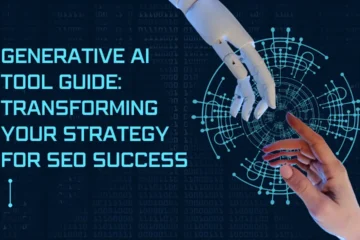The future is here, and it’s powered by xAI. Artificial Intelligence (AI) has been around for quite some time, but it’s only in recent years that the term “xAI” has gained significant attention. xAI or explainable AI is a subset of AI that offers insights into how AI algorithms arrive at their decisions. This increased transparency is changing the game for businesses, enabling them to make data-driven decisions with greater accuracy and efficiency.
xAI is also making it easier for businesses to identify new opportunities, improve customer experiences, and automate repetitive tasks. In this article, we’ll explore how xAI is shaping the future of business and how companies can leverage it to stay ahead of the competition. From predictive analytics to chatbots, we’ll cover the latest xAI trends and show you how to harness the power of xAI to take your business to the next level. So, fasten your seatbelts and get ready to discover how xAI is changing the game for businesses!
Types of xAI: Machine Learning, Natural Language Processing, Computer Vision
xAI is a complex field that encompasses various techniques and approaches. There are three primary types of xAI: machine learning, natural language processing, and computer vision. Machine learning is a subset of AI that involves training algorithms to identify patterns in data and improve their accuracy over time. Natural language processing (NLP) is a branch of AI that focuses on enabling machines to understand human language and respond appropriately. Computer vision, on the other hand, involves teaching machines to interpret and analyze visual data, such as images and videos.
Machine learning is by far the most common form of xAI, and it’s used in a wide range of applications, such as fraud detection, image recognition, and recommendation systems. For example, Netflix uses machine learning to personalize its content recommendations for each user, increasing the chances that they’ll find something they enjoy watching. Similarly, Amazon uses machine learning to optimize its supply chain and ensure that products are delivered to customers as quickly and efficiently as possible.
NLP is also becoming increasingly important in the business world. Companies are using NLP to analyze customer feedback, automate customer service, and even generate content. For example, Grammarly, a popular writing tool, uses NLP to analyze text and suggest improvements to grammar and style. Meanwhile, chatbots are becoming increasingly popular as a way to provide 24/7 customer service and handle routine inquiries.
Computer vision is also finding its way into the business world, particularly in industries such as manufacturing and retail. For example, Walmart uses computer vision to monitor inventory levels and ensure that products are stocked appropriately. Meanwhile, manufacturers are using computer vision to automate quality control processes and detect defects in products.
Benefits of xAI for businesses
The benefits of xAI for businesses are many. One of the most significant advantages of xAI is its ability to make data-driven decisions with greater accuracy and efficiency. xAI algorithms can analyze vast amounts of data and identify patterns that humans might miss. This, in turn, enables businesses to make more informed decisions and identify new growth opportunities.
Another benefit of xAI is its ability to improve the customer experience. For example, chatbots can provide 24/7 customer service, reducing response times and improving customer satisfaction. Meanwhile, recommendation engines can suggest products and services that customers are more likely to be interested in, increasing the chances of a sale.
xAI can also help businesses automate repetitive tasks, freeing up employees to focus on more complex and creative work. For example, xAI can be used to automate data entry tasks or to generate reports automatically, reducing the amount of time and effort required by employees.
Real-world examples of xAI in action
xAI is already being used in various industries, from healthcare to finance to retail. Here are some real-world examples of xAI in action:
Healthcare
In the healthcare industry, xAI is being used to assist with diagnosis and treatment. For example, IBM’s Watson Health platform uses machine learning to analyze patient data and generate personalized treatment plans. Meanwhile, researchers are using xAI to analyze medical images and identify potential health issues, such as tumors or lesions.
Finance
In the finance industry, xAI is being used to detect fraud, automate trading, and improve risk management. For example, JPMorgan Chase uses machine learning to analyze financial data and identify potential risks. Meanwhile, PayPal uses xAI to detect and prevent fraud, reducing losses and increasing security.
Retail
In the retail industry, xAI is being used to personalize the customer experience and optimize supply chain management. For example, Sephora uses chatbots to provide personalized beauty recommendations to customers, while Amazon uses machine learning to optimize its supply chain and ensure that products are delivered to customers as quickly as possible.
Ethical Considerations with xAI
As with any technology, there are ethical considerations to take into account when it comes to xAI. One of the main concerns with xAI is its potential to reinforce existing biases and prejudices. For example, if an xAI algorithm is trained on a biased dataset, it may perpetuate those biases in its decisions.
Another concern is the potential for xAI to be used for malicious purposes. For example, xAI could be used to create deepfakes, which are highly convincing fake videos that can be used to spread disinformation or manipulate public opinion.
To address these concerns, it’s essential to ensure that xAI algorithms are transparent and accountable. This means that businesses should be able to explain how their xAI algorithms arrive at their decisions and be prepared to address any biases or ethical concerns that arise.
Challenges and limitations of xAI
While xAI offers many benefits, it’s not without its challenges and limitations. One of the main challenges with xAI is its complexity. xAI algorithms can be difficult to understand and even more challenging to develop. This means that businesses may need to invest significant resources in developing xAI solutions.
Another challenge is the need for large amounts of data. xAI algorithms require vast amounts of data to train effectively, which can be a significant barrier for smaller businesses or those with limited access to data.
Additionally, xAI is not a silver bullet solution. While it can be used to automate repetitive tasks and improve decision-making, it cannot replace human expertise entirely. This means that businesses need to strike a balance between xAI and human input to achieve the best possible results.
How to implement xAI in your business
Implementing xAI in your business can be a complex process, but it’s essential to get it right to reap the benefits. Here are some steps to take when implementing xAI in your business:
1. Identify the problem you want to solve: Before implementing xAI, it’s essential to identify the problem you want to solve. This will help ensure that your xAI solution is targeted and effective.
2. Gather data: xAI algorithms require vast amounts of data to train effectively. It’s essential to gather as much data as possible and ensure that it’s of high quality.
3. Choose the right xAI technique: There are various xAI techniques to choose from, including machine learning, natural language processing, and computer vision. Choose the technique that’s best suited to your problem.
4. Develop your xAI solution: Developing an xAI solution can be a complex process. It’s essential to work with experienced developers who have the expertise to develop a robust and effective solution.
5. Test and refine your xAI solution: Once your xAI solution is developed, it’s essential to test it thoroughly and refine it based on the results.
Future of xAI and its Impact on Industries
The future of xAI is bright, and its impact on industries is likely to be significant. As xAI technology continues to evolve, we can expect to see more businesses using xAI to drive growth, improve customer experiences, and automate tasks.
One area where xAI is likely to have a significant impact is healthcare. As xAI algorithms become more sophisticated, we can expect to see more personalized treatment plans and better disease diagnoses.
Meanwhile, in the finance industry, xAI is likely to play an increasingly important role in risk management and fraud prevention. xAI can analyze vast amounts of financial data and identify potential risks, helping businesses to make more informed decisions.
xAI tools and technologies to explore
There are various xAI tools and technologies to explore, depending on your business’s needs. Here are some of the most popular:
1. TensorFlow: TensorFlow is an open-source machine learning framework that’s widely used in the industry.
2. PyTorch: PyTorch is another popular open-source machine learning framework that’s known for its ease of use.
3. Natural Language Toolkit (NLTK): NLTK is a popular tool for natural language processing that’s used by many businesses.
4. OpenCV: OpenCV is an open-source computer vision library that’s used for image and video analysis.
5. Dialogflow: Dialogflow is a popular chatbot development platform that’s used by many businesses to automate customer service.
Conclusion
In conclusion, xAI is changing the game for businesses, enabling them to make data-driven decisions with greater accuracy and efficiency. From machine learning to NLP to computer vision, there are various xAI techniques to choose from, depending on your business’s needs. While xAI offers many benefits, it’s essential to address ethical concerns and ensure that xAI algorithms are transparent and accountable. By implementing xAI effectively, businesses can stay ahead of the competition and drive growth in the years to come.












